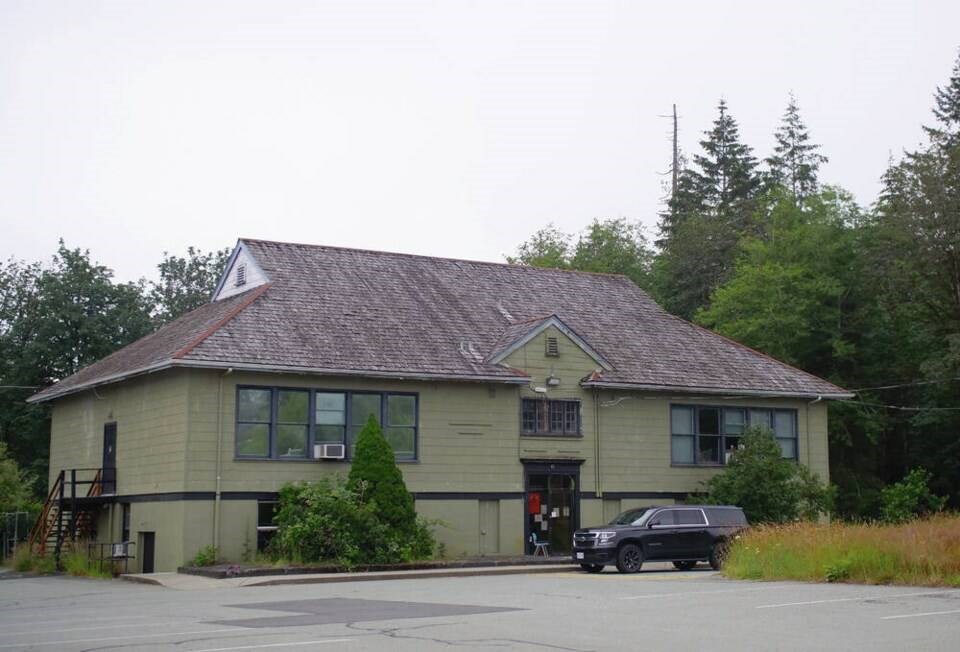Ground-analyzing technologies have identified 17 potential unmarked graves on lands that were once part of the Alberni Indian Residential School, the Tseshaht First Nation announced Tuesday.
The results do not show human remains and do not confirm a site is a grave, said Brian Whiting of GeoScan, a company using ground-scanning radar equipment at Alberni and other former residential schools.
The only way to be 100 per cent certain is by testing and excavation, he said.
The Tseshaht nation held a sombre community meeting to reveal what it has learned to date in the first phase of what’s expected to be a much longer effort to uncover more information about children who attended the school, which closed 50 years ago.
Survivors and members of other First Nations came from around the Island and beyond to attend the event, called “Doing it for our Ancestors.”
The event was lived-streamed to about 1,000 people via the Tseshaht First Nation’s Facebook page.
Elected Chief Councillor Wahmeesh (Ken Watts) said in a community gymnasium that youngsters from 70 nations were brought to the Alberni school from not only Vancouver Island but communities up and down the coast.
The school operated between 1900 and 1973. Some buildings have been taken down and more will likely be demolished.
In addition to the 17 sites highlighted, researchers examined historical documents and received input from survivors. A total of 67 students are believed to have died at the school, although full names are not recorded for all of them.
Previously, the number was thought to be 29 students.
More than once during the afternoon, people sat or stood in silence when Wahmeesh asked them to take a moment and think about what they had just heard. “We want people to remember that these were just children,” said Wahmeesh, adding it’s a “sacred responsibility” of the Tseshaht Nation to get answers.
“Think about what would happen today if a child was five years old and was removed from their home.”
Families will be contacted before any additional information is released about the children who died at the school, he said.
The Presbyterian and United churches were forthcoming with documents, said researcher Sheri Meding, who played a key role in coming up with the number 67.
However, some records were destroyed and other health records are not accessible because of privacy legislation.
Overwhelmingly, the cause of death was medical conditions, she said. Some were discharged from the school to one of three Indian Hospitals in the province, including one in Nanaimo, while some students were sent home and died there, she said.
Officials had reported that conditions at the school were poor, Meding said.
Wahmeesh said the work done so far is the first phase of many, and they have “barely skimmed the surface” of what needs to be done.
Next steps include hosting a survivors’ gathering. The Tseshaht Nation has also called for an independent body, agreed to by the nation, to carry out an investigation of medical records.
The federal government should pay for the Tseshaht to hand-deliver information to families about student deaths so that it would be done in a culturally appropriate way, the nation said.
The nation is urging the federal government to contribute long-term funding to support research on the students’ deaths and to create a centre for excellence nationally or regionally for such work.
It is also seeking increased funding to address drug, alcohol, mental health and trauma in First Nations communities.
The Nuu-chah-nulth Tribal Council, which represents the Tseshaht First Nation and 13 others on the Island’s west coast, said in a statement they are grieving the loss of the children who never made it home and the contribution they would have made.
“We want these children to now be at peace knowing that we have found them and they can go home knowing they did nothing wrong,” tribal council president Judith Sayers said in the statement.
Sayers asked Canadians to join in efforts to hold the church and federal government accountable for the “horrific practices of genocide” that ended these lives and scarred so many more.
“It is a long road to actual reconciliation, and understanding the appalling impact of the truths revealed today is a start,” she said.
>>> To comment on this article, write a letter to the editor: [email protected]



